#pseudacris crucifer
Note
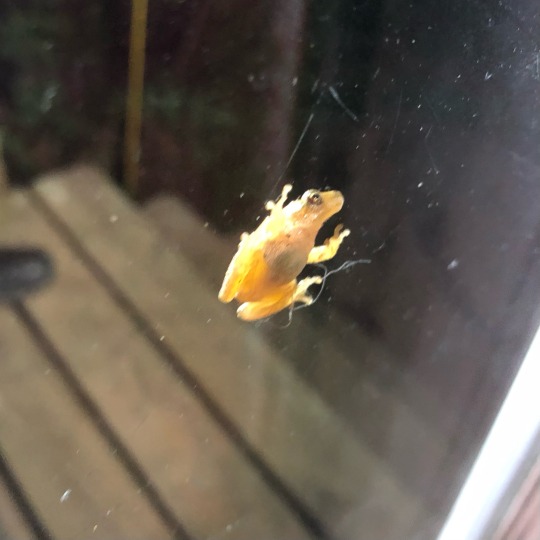
spring peeper be upon ye
And upon ye, @pugswithlasers
178 notes
·
View notes
Text

"I'm just going to do quick doodles for these," I said. "Some fast pencil scribbles."
*proceeds to spend an hour drawing a single frog.*
Clearly I am full of lies. It is 99% pencil tool though. Using the ink pen brush to do the eyes so they have crisp edges.
Amphibiuary Day 4: Sing. One of my favourite frogs, the spring peeper, Pseudacris crucifer.
My childhood home was very close to a large wetland area. You knew springtime was truly here when the peepers would start living up to their name. The volume level of their booty calls is not commensurate with their tiny size at all. Some ponds in the woods could be almost painful to stand near with how loud it would get.
Love these little dudes.
They sound like this:
youtube
#Amphibiuary#Amphibiuary 2024#amphibian#spring peeper#best frog#peep peep peep peep#even keeping the windows closed will not keep out NOISY FROG SOUNDS#Pseudacris crucifer#Synth's dumb doodles#Autodesk Sketchbook#digital art#my art#I moved to another country and they don't exist here#I miss them#so sometimes I find YouTube videos of spring peeper noises to play in the background#frogs = best white noise machine#Youtube
54 notes
·
View notes
Text
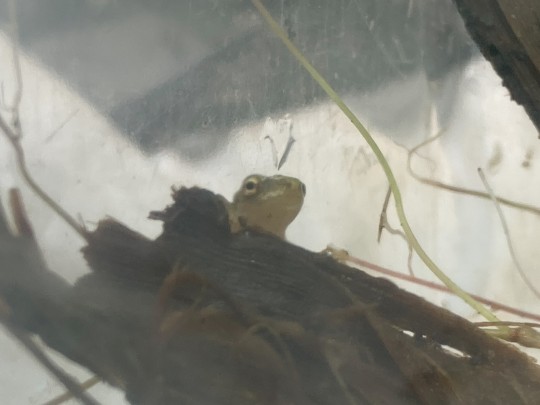

Spring peeper baby. Size of my pinkie fingernail.
#fear not. all creatures are put back.#smallest guy. fastest in the wild west#spring peeper#Pseudacris crucifer#frogs#amphibians#herps#herpetology#wildlife#my photo#creatureposting
6 notes
·
View notes
Text
youtube
I don't know who needs to hear an hour of spring peepers calling in the spring but I did.
I'm on a campaign to make frogs the most romantic animal.
Just choose the most romantic one from this list and then tell me the actual most romantic animal in the tags (bonus points if it is the specific species of frog you find most romantic)
#Pseudacris crucifer#I started on this rabbit hole doing fic research#and then realized that listening to spring time critters calling in the spring is a really lovely activity for February#Youtube
5 notes
·
View notes
Text
Words related to Spring
to include in your next poem/story
Bloodroot -> a plant (Sanguinaria canadensis) of the poppy family having a red root and sap and bearing a solitary lobed leaf and white flower in early spring.
Bluebonnet -> either of two low-growing annual lupines (Lupinus subcarnosus or L. texensis) of Texas with silky foliage and blue flowers.
Coltsfoot -> a perennial composite herb (Tussilago farfara) with yellow flower heads appearing before the leaves.
Crocus -> any of a genus (Crocus) of herbs of the iris family developing from corms and having solitary long-tubed flowers and slender linear leaves.
Magnolia -> any of a genus (Magnolia of the family Magnoliaceae, the magnolia family) of American and Asian shrubs and trees with entire evergreen or deciduous leaves and usually showy white, yellow, rose, or purple flowers usually appearing in early spring.
Morel -> any of several edible fungi (genus Morchella, especially M. esculenta) having a conical cap with a highly pitted surface.
Mourning cloak -> a blackish-brown nymphalid butterfly (Nymphalis antiopa) that has a broad yellow border on the wings and is found in temperate parts of Europe, Asia, and North America.
Skunk cabbage -> any of several early-blooming perennial herbs of the arum family that occur in shaded, wet to swampy areas and have a fetid odor suggestive of a skunk.
Spring peeper -> a small brown tree frog (Pseudacris crucifer synonym Hyla crucifer) of the eastern U.S. and Canada that has a shrill piping call and breeds in ponds and streams in the spring. They are often just called peepers start singing on some of the earliest warm spring nights, ushering in the season with an evocative chorus. While they are highly successful in permanent ponds, they also utilize temporary, ephemeral ponds that appear briefly in the spring due to rain and snowmelt.
Tulip -> any of a genus (Tulipa) of Eurasian bulbous herbs of the lily family that have linear or broadly lanceolate leaves and are widely grown for their showy flowers.
#writing prompt#spring#writeblr#nature#writers on tumblr#poetry#poets on tumblr#spilled ink#literature#lit#words
34 notes
·
View notes
Photo



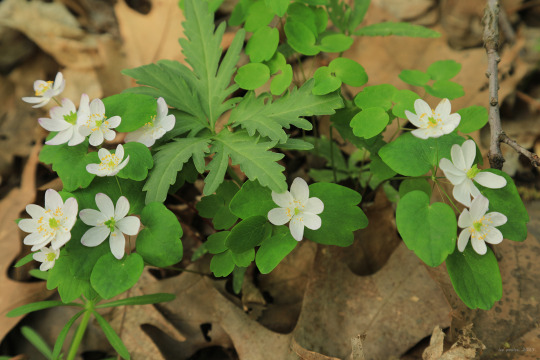


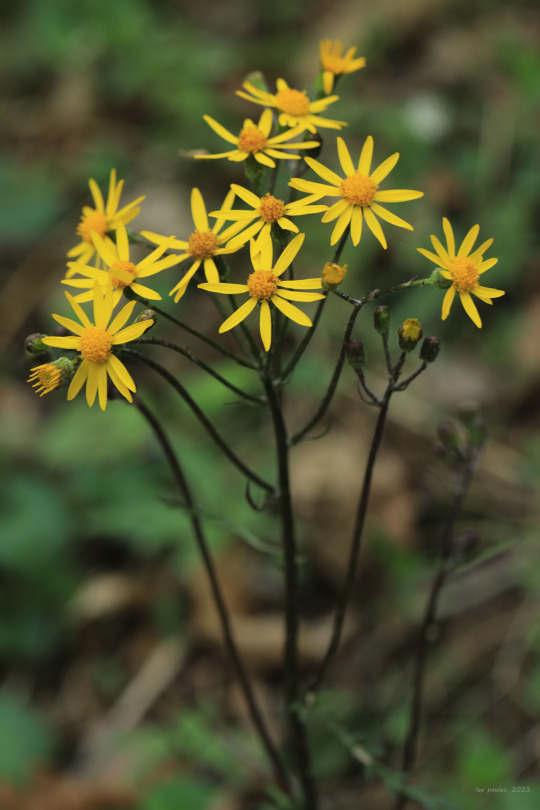

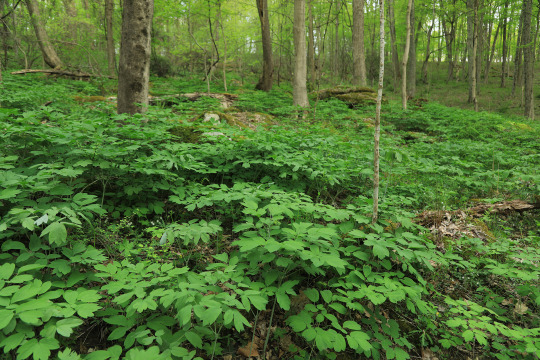

“Every spring is the only spring, a perpetual astonishment.”
- Ellis Peters
Photos from a hike this evening in Elizabeth’s Woods at Toms Run Preserve. From top: Azure bluet (Houstonia caerulea); a diminutive spring peeper (Pseudacris crucifer) hiding in the leaf litter; rue anemone (Thalictrum thalictroides); blackhaw viburnum (Viburnum prunifolium); lavender variation of dwarf larkspur (Delphinium tricorne); golden ragwort (Packera aurea); Jack-in-the-pulpit (Arisaema triphyllum); blue cohosh (Caulophyllum thalictroides); and a very shy Eastern box turtle (Terrapene carolina carolina).
#appalachia#vandalia#west virginia#spring#april#wildflowers#flora#reptile#amphibian#azure bluet#spring peeper#rue anemone#blackhaw viburnum#dwarf larkspur#golden ragwort#jack-in-the-pulpit#blue cohosh#eastern box turtle#elizabeth's woods#toms run preserve
209 notes
·
View notes
Photo
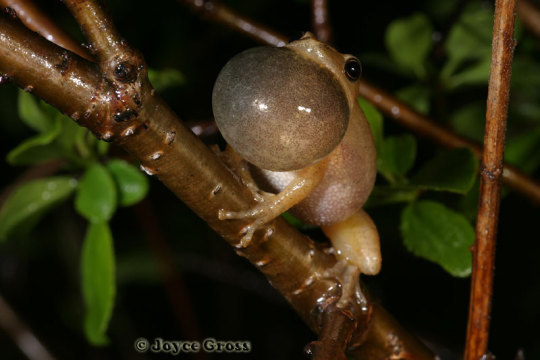

It’s Croak Sac Sunday! Please enjoy these images of a spring peeper [Pseudacris crucifer] peeping his heart out in Tompkins County, New York. If you live in the eastern United States or Canada, then you certainly have heard the spring peeper’s call. They begin calling very early in the spring, often before all other species. A pair of peepers can produce about 900 eggs. Images by Joyce Gross.
240 notes
·
View notes
Text
[CM] Amphibians
Amphibians! These words were all very fun to come up with. Who doesn’t like listening to frog sounds? Below we have translations for four frogs, three salamanders, and one fellow with a name from base Clanmew.
Common toad (Bufo bufo) - Amam*
Small and common. Poisonous to eat, but some cats like to chase them anyway.
Spring peeper (Pseudacris crucifer) - Eep
Tiny chorus frog with light peeping calls that are a tell-tale sign of spring. This word is also an unintentional homonym with base Clanmew eep*, which means black rat!
Bullfrog (Lithobates catesbeianus) - Rroak
Large distinct frog with a loud, deep call. A common game among apprentices is ranging up-and-down riverbanks and looking for bullfrogs to startle into the water.
Green frog (Rana clamitans) - Ook
Second-largest frog on ClayClan territory. Green frogs are very territorial - some cats like to watch them wrestle!
Pickerel frog (Lithobates palustris) - Rroo
Heavily spotted frog. Stressed pickerel frogs produce a toxic secretion that makes them poisonous to eat; it may also irritate skin.
Wood frog (Lithobates sylvaticus) - Rrikrrik
Brown-and-black frog. Sometimes found frozen in the dead of winter - cats believe them to be dead during this time, but they actually thaw in the spring!
Spotted salamander (Ambystoma maculatum) - Sslip
Large salamander with distinct yellow spots. Bitter and poisonous, never hunted.
Dusky salamander (Desmognathus fuscus) - Mwip
Mottled and relatively nondescript salamander. Occasionally found foraging in wet shady spots.
Common newt (Lissotriton vulgaris) - Ssliks
Little spotted newt. Found on land most of the year, but move into ponds for the breeding season. Also known as efts; the acolyte Eftrunner’s Claymew name, Sslikspanpean, could also be translated as Newtrunner.
5 notes
·
View notes
Text
Not to be a huge herp nerd but in Lbfad, they’ll occasionally have a frog chorus going in the night time nature scenes and they could very well be using East Asian frog calls (I know almost nothing about the herpetofauna of east Asia, let alone their frog calls) but it sounds like Pseudacris crucifer and Pseudacris maculata and so each time I’m like 👁👄👁 show me them
#it’s distracting#i get why birders get pretentious about bird calls in movies#unfortunately I only know the calls of midwestern US frog species#this spring I’ll hopefully be familiarized with some southeastern species that I haven’t seen a lot of yet#crucifer and maculata gave us some trouble this summer tho let me tell ya#it would always be dry and we’d be on a public road surrounded by private property#with maculata juusssttttt calling in the distance#plus I’m great at spotting frogs when they’re on land even if they’re very very tiny#but the second they’re in the water it’s like game over for me#and we encountered maculata in the water so often#they’re itty little guys#i would know it would be right in front of my face but I still couldn’t see the damn thing#okay I’m done flexing my frog muscles#love between fairy and devil#by yours truly the omelette of cheese
7 notes
·
View notes
Text
Nature Memo #1
I decided to go on a little adventure over the weekend since I had three days off (I generally work on the weekends and am almost always on-call for crisis situations). I picked up a new journal so that I could collect plant samples and press them. I've been intending to do this for way too long (2011) but have not gotten around to doing it until now.
I find nature to be mesmerizing and way too often taken for granted. Parks are great, and those with unpaved nature trails are even better. But even then, they are taken for granted.
In any event, below are the list of observations that I made. This is incomplete because I did not include the trees and shrubs that were observed. Of the 29 listed items below, 10 were ones that I had not previously recorded, so I'm pretty excited about that. The total number of living species (plants, insects, birds, reptiles, fungi, arachnids, mammals, fish, mollusks, amphibians, and other species) that I have recorded (as in, photographed, dated, and confirmed the species of) is now 276.
Plants observed (all pressed!)
Oxalis triangularis, False Shamrock
Narcissus poeticus, Poet’s Narcissus
Achillea millefolium, Common Yarrow
Muscari neglectum, Grape Hyacinth
Galium aparine, Catchweed Bedstraw
Stellaria media, Common Chickweed
Oxalis violacea, Violet Woodsorrel
Vinca minor, Lesser Periwinkle
Bowlesia incana, Hoary Bowlesia
Narcissus tazetta, Bunch-flowered Daffodil
Veronica persica, Bird’s-eye Speedwell
Valerianella locusta, Common Cornsalad
Allium vineale, Wild Garlic
Cardamine hirsuta, Hairy Bittercress
Ranunculus hispidus, Bristly Buttercup
Ornithogalum umbellatum, Common Star-of-Bethlehem
Houstonia pusilla, Tiny Bluet
Viola bicolor, American Field Pansy
Claytonia virginica, Virginia Spring Beauty
Insects observed
Camponotus pennsylvanicus, Black Carpenter Ant
Papilio rutulus, Western Tiger Swallowtail (Butterfly)
Coleomegilla maculata, Spotted Pink Ladybeetle
Polistes Carolina, Red Wasp
Eurema lisa, Little Yellow (Butterfly)
Celastrina ladon, Spring Azure (Butterfly)
Amphibians observed
Pseudacris crucifer, Spring Pepper (Frog)
Fungi observed
Trametes versicolor, Turkey-tail
Cladonia evansii, Evan’s Deer Moss
Arachnids observed
Oxyopes salticus, Striped Lynx Spider
Next step is to let the pressed plans dry, followed by labeling, dating, notes on GPS coordinates for each sample, as well as information on whether it it is edible, seasonal growth, and if I am feeling particularly brave I will attempt to draw them.
All of these samples were taken in Arkansas between Siloam Springs, Pea Ridge National Battlefield, and Bella Vista.
#plants#pressing plants#hiking#arkansas nature#oklahoma nature#pea ridge national battlefield#insects#fungi#arachnids#amateur naturalist#biology#personal#nature memo#nerd#nerd alert#nerd stuff
2 notes
·
View notes
Text

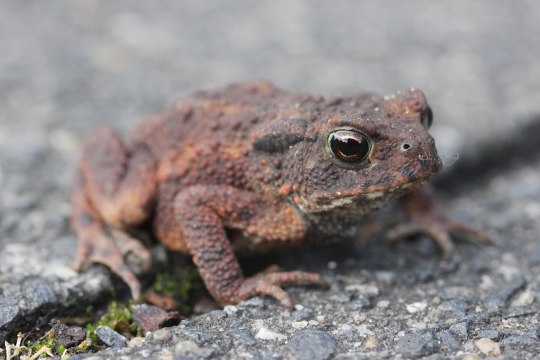
Spring Peeper: Like several other species of Northern frog, (and specifically, a few other species of Pseudacris,) spring peepers have the ability to freeze in the winter and thaw out in the spring. These frogs can survive internal temperatures as low as -8°C (17°F). As their common name suggests, they’re one of the first species to emerge after the thaw, with their calls resembling a chick’s peep. Females will select a male based on the strength and frequency of the call, typically preferring lower frequencies. Sometimes, a male will elect not to call altogether and instead wait on the outskirts of the chorus, ambushing females drawn in by the others.
Common Toad: This toad, found mostly throughout Europe, is a member of a species complex along with B. japonicus and B spinosus; they are unable to be clearly taxonomically separated, but are still considered to be different species at the moment. After emerging from overwintering holes in the spring, they tend to migrate back to their spawning pool to breed, using olfactory, magnetic, and visual cues to find their way. As a defence mechanism, they produce a foul-tasting toxin to deter predators, although neither crows, (who have been spotted plucking out their livers,) nor grass snakes tend to be deterred. Once, in Scotland, one was found 99 m (324 ft) deep underwater!
4 notes
·
View notes
Text

🐸 SPRING PEEPER FROG 🐸
Scientific Name: Pseudacris crucifer
Family: Hylidae
Class: Amphibian
Length: ~1 in. (2.5 cm)
Weight: 0.11 to 0.18 ounces (3 to 5 grams)
Lifespan: 3-4 years
Origin: Eastern USA and Canada
Diet: Insectivore- Beetles, ants, flies, and spiders
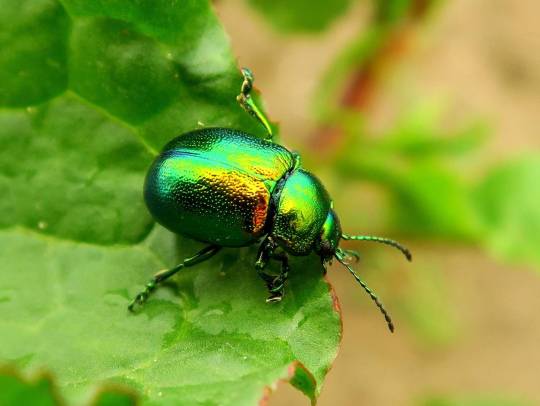

Behavior: The males' iconic mating call is a high-pitched whistling/peeping sound repeated about 20 times per minute. The faster/louder they sing, the greater the chances of attracting a mate. They often congregate near water and sing in trios, with the deepest-voiced frog starting the call.
Offspring: Females will lay 750-1,200
Development: The eggs will hatch between 2 days and 2 weeks depending on the tem perature, tadpoles become frogs over the course of 6-12 weeks

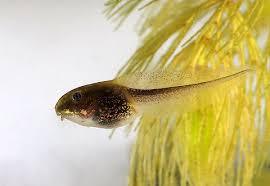
ANIMAL REQUESTS: OPEN
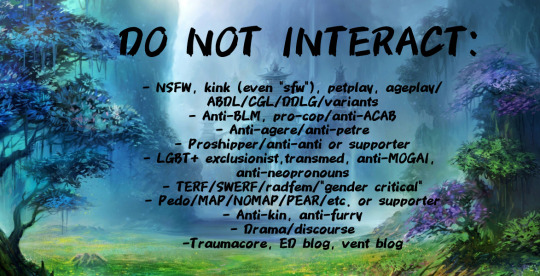
#agere animal cards#bugs tw#trypophobia tw#eggs tw#aminals#agere#age regression#card: peeper frog#frogs & toads#class: amphibians
8 notes
·
View notes
Text
Blog Post #9: Let's Talk about Frogs!
Blog Prompt: Interpret (through this blog) the most amazing thing you know about nature – get us excited. This is your blog – your audience isn’t out in the field with you so bring the field to your armchair reader.
Since this week's post encourages us to share and extend our nature and environmental knowledge I wanted to share with you guys all the super Interesting things I’ve learned through my job the past two years! For the past two summers I have had the amazing opportunity to work at a conservation area close to my hometown, Heartland Forest. This protected area works to help conserve some of Ontario’s endangered, threatened and special concern species like the painted turtle, the snapping turtle, little brown bats, monarch butterflies, and grey ratsnake to name only a few. Within this company we work to spread environmental knowledge to visitors but also to children through nature school workshops and camps as younger generations are our future! We encourage and pass on knowledge of all kinds of species within Ontario but also species around the world and through the people I have worked alongside I have learned a lot about different behaviours and innerworkings of different species lifestyles. I feel like the best tool for learning in general is learning from one another and sharing experiences and passed down knowledge.
With that said, I have had the opportunity to learn and work with tons of different amphibian species from snakes, salamanders, frogs and turtles. Within this conservation area, there are multiple species of frogs that call this place home from something like the Wood Frog to the Western Chorus Frog all contributing different processes in our ecosystems. Specifically during my time I learned a lot about a species of frog that I didn’t know was common in Ontario which is the Spring Peeper (Pseudacris crucifer) and its lifestyle and behaviours. This species is known for their peeping call which is where they get their name from and this call usually signals the coming of spring in woodlands and wetland much like Heartland Forest. This frog is one of the loudest frog species and their mating calls are repeated around 20 times a minute and reach 90 decibels. To put that into perspective for you, they are about as loud as a motorcycle. They also have a distinctive ‘X’ pattern on their back that makes them unique and distinguishable. The Spring Peeper goes through a process which is known as “freeze tolerance” where when the temperatures drop they have what is called a natural antifreeze within their genome allowing them to withstand winter temperatures. During summer little baby Spring Peepers could be seen hopping around our forest trails. They are so tiny that they look like little specks of dirt moving. Below I have provided a picture from google for reference.
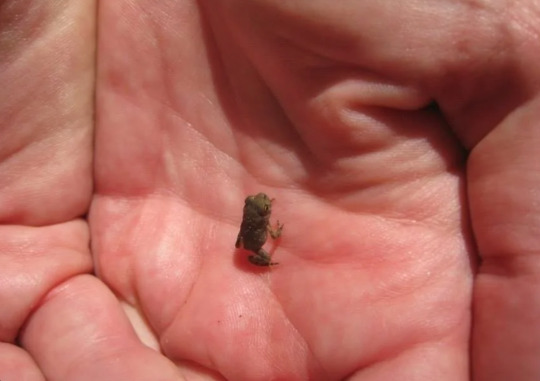
While on the topic of frogs I also learned about the Reticulated Glass Frog through our nature school that we provide for children. Within these ‘lessons’ we teach the children things about predation, conservation, lifestyles, etc, of all kinds of species and through my coworker I specifically learned about the Reticulated Glass Frogs and how they get their name from their translucent appearance. Another thing I learned is that they are especially threatened by habitat loss since they cling to the undersides of leaves and lay eggs there and they choose leaves that usually hang above a source of water. Another thing about their lifestyle is that their natural predators are wasps which I found quite interesting considering even though these frogs are tiny they are still much larger than the wasp. I learned that the eggs of this frog species are what is mostly vulnerable to the wasp as they search for and feed on the not yet developed larvae. What’s interesting though is that the larvae can sense the danger and more developed eggs can break free and fall into the water below to save themselves. Below I have attached a video to physically show the frog and wasp interaction play out and I highly recommend giving it a watch!
youtube
0 notes
Text
I’m sorry about post quality I’m trying to attract beautiful Pseudacris crucifer to kiss me with tongue I’ll get back to perverting the holy gospel with transgenderism soon tho
1 note
·
View note